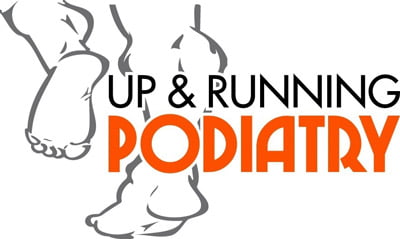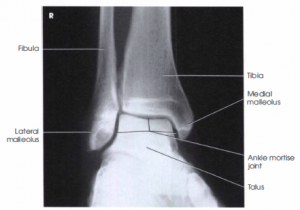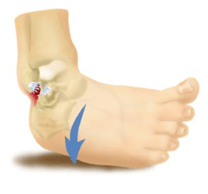With a whopping 23 AFL footballers benched for round 3 with foot, ankle and other podiatric problems the importance of proper rehabilitation after injury is only emphasised.
We thought we’d touch base on the ankle given it’s had a lot of attention lately.
Our ankle is made up of 3 bones, the talus, the tibia and the fibula. The bones are organised neatly with the tibia and fibula creating a mortise for the talus to tuck into. The joint is held into position due to its anatomical structure and a series of ligaments and tendons, some of which start in the calf and attach down at the furthest point in our toes.
Due to its anatomical structure the ankle joint itself only has two movements, dorsiflexion and plantarflexion or more commonly ‘up and down’ like the true hinge joint that it is.
All other movement around this area is achieved with other bones gliding against the talus enabling a complete range of motion and a joint that can become subject to the many stresses of multi-directional sports, uneven pavement and unfortunate landing.
The most common type of ankle injury is an inversion sprain– this is where you roll to the outside of your foot and damage the ligaments which keep the ankle stabilised.
Ankle inversion injuries are graded from 1-3, with 1 involving a mild amount of damage and 3 being rupture of some of the ligaments and a highly unstable ankle joint. Pending on the severity of the injury there is also the possibility of bone involvement, with fractures of either the tibia, fibula or damage to the talar dome- these are more serious and require immobilisation with a moon boot and possibly surgery.
From the initial point of injury we cannot emphasise how important it is to stop what you’re doing- don’t push on, get off the foot and start conservative management. We recommend following ‘RICER’ Rest Ice Compression Elevation and Referral.
Referral means going on to see a health professional, this should be either your local GP, podiatrist or physiotherapist. This way a thorough assessment can be undertaken to determine the extent of the injury and any other interventions that might help you to recover quicker.
Research has shown you are 50% more likely to re-sprain the injured ankle if ankle dorsi-flexion is not restored, we can help you restore this!
Pending on the level of the injury, rehabilitation might start 2-6 weeks post injury.
Rehabilitation is aimed at improving movement, increasing stability and decreasing the risk of reinjury. It is important that you’re rehabilitation plan not only covers general ankle rehab but also sport specific rehabilitation to ensure that your ankle is ready to hold up to the demands of the sport you love.
As podiatrists we undertake a thorough biomechanical assessment to determine what structures have been damaged, the range of motion available and how stable the joint is.
A tailored ankle rehabilitation program is then created.
We would start with non-weight bearing mobilisation exercises that include:
● Up and Down motion at the ankle joint (dorsiflexion/plantarflexion)
● In and out motion at the ankle (inversion/eversion)
● Circular rotations
● A-Z with your ankle, this means writing out the captial letters of the alphabet with your ankle using your big toe as a cursor.
The above can all be advanced with use of a resistance band depending on your podiatrists assessment of your current range of motion or once initial strength increases.
We also prescribe some balancing exercises to get the intrinsic and extrinsic muscles activating around the joint.
● Stalks Pose- simply balancing on one foot using a wall to balance and increasing the level of difficulty by removing hands, then closing eyes and then changing the surface by introducing blankets and pillows.
Sport specific exercises are something that we start to introduce once the initial strength and stability has increased to get you back to the sport that you love.
If you’re wanting some tailored advice, have struggled with chronic ankle instability or have a history of ankle sprains then head over to our ‘bookings’ page and make your appointment today.



